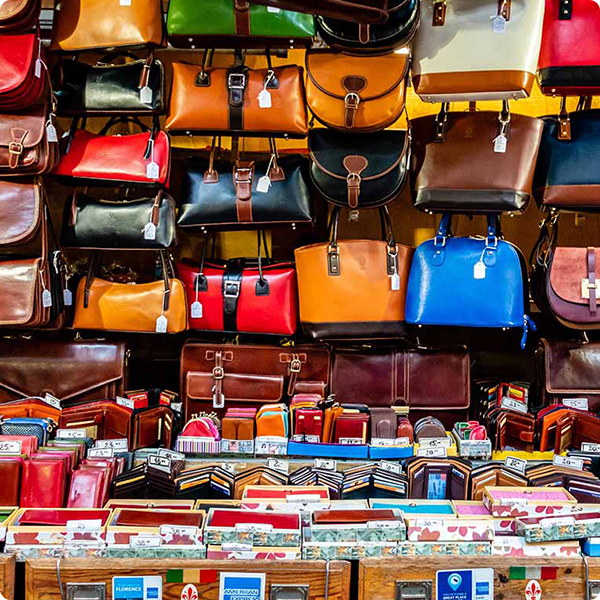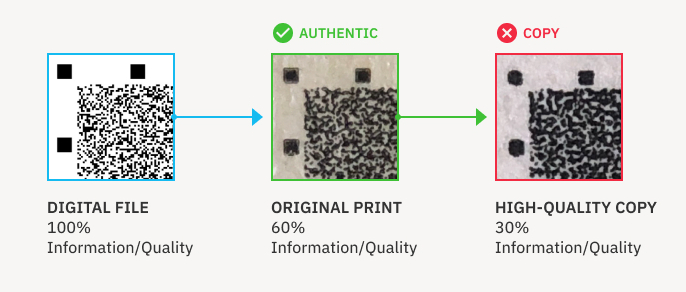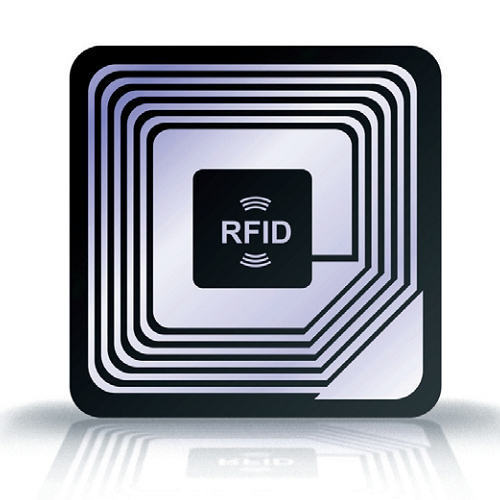Holographic stickers, watermarks, scratch-off secret codes, and even holding documents up to the light were once considered the most cutting-edge anti-counterfeiting technologies. These legacy solutions are being replaced by more effective options that better equip companies for the increasing scale and sophistication of counterfeiting operations. The number of counterfeit products sold on e-commerce platforms is increasing creating challenges for even the most experienced players. Fortunately this environment has also prompted the availability of new, digital anti-counterfeiting solutions. These new options are more versatile, cost effective, and provide real-time data to companies dealing with counterfeits in the market.
The new stars of modern anti-counterfeiting solutions are secure QR codes, RFID, and NFC chips connected to cloud-based counterfeit data and case management platforms.
Some of these new solutions offer a convenient and reliable way for customers and inspectors to authenticate millions of products using little more than a smartphone. This article explains how some of the latest anti-counterfeiting solutions work and reveals which of these are best for specific use-cases.
Secure QR codes are QR codes that include a counterfeit detection feature and can be printed directly on products, packaging, or documents. When secure QR codes are copied without authorization, a simple smartphone scan will initiate a process that will expose them as unauthorized copies. Companies and governmental organizations using secure QR codes can offer this authentication as a feature on their official websites, accessible by a mobile phone. Secure QR codes are excellent tools for copy detection because they take advantage of naturally occurring data loss that is inherent in the reproduction process. The following images demonstrate this concept.
NFC chips are small electronic chips that can be attached to or embedded in a product or item. When a smartphone is within few inches of the chip, the NFC triggers a notification with a webpage URL where the product can be authenticated. There are failsafes for tech savvy users to authenticate a fake product, even if the NFC chip is missing or if it’s a fake one.
When evaluating an anti-counterfeiting solution for products, packaging, or documents, you’ll need to consider the following:
Are you interested in collecting real-time data? If the anti-counterfeiting solution you’re evaluating doesn’t connect to an online platform or system, then it’s unlikely that you’ll be able to gather useful interaction data. Digital anti-counterfeiting solutions can generate real-time data that paint a picture about counterfeiting operations that are invaluable for your organization as well as your customers and end users.
Are you interested in being able to “discover” counterfeit products that have completely left the anti-counterfeiting feature off the product? Some digital anti-counterfeiting solutions include a crowdsourcing-like approach for a “trusted channel” to be included in the anti-counterfeiting program design. Not all solutions offer this.
Is key data, including location information, about counterfeits provided? The best anti-counterfeiting systems gather data on scan location, scan frequency, records fake websites, and uses all of this information to provide enforcement and mitigation options.
Is the system hardened and difficult to “crack” or copy? No security technology is 100% immune to being defeated. One of the most effective deterrents in anti counterfeiting is introducing a prohibitively high cost or effort to crack the anti counterfeiting solution. If a bad actor replaces a genuine marker, like a tag, with a fake version, it may be difficult or impossible to tell the difference with the naked eye. If making a passable copy of an anti counterfeit feature takes less effort and cost than the potential earnings, you’ll need to consider something a little tougher.
Ease of use to check the feature and cost to deploy must be considered too. Any anti-counterfeiting solution provider needs to be able to clearly answer these kind of questions if they are to be considered as potential vendors.
Is checking authenticity quick and simple? How fast can an end-customer or inspector get a “genuine” or “fake” assessment? Results that take too long will result in less people even attempting to complete the authentication process.
Does authentication require special equipment? The best countermeasures won’t need much in the way of specialized equipment.
What are the costs? Generally there are two approaches that a provider will offer:
- Implementation is possible within your existing processes, namely your printing, packaging, or labelling process
- The countermeasure can be prepared by the vendor and later added to documents, products, or any items
Both approaches have different investment and operating costs that will impact the return on investment of an anti counterfeit project.
The best digital anti-counterfeiting solutions provide data and workflows that will be critical in reducing counterfeits. Accumulating data linked to an anti counterfeiting feature provides the following benefits:
-
Instant authentication results such as “genuine” or “suspected counterfeit” will be delivered instantly and also be recorded in a central database.
-
A stored list of known counterfeit product codes that can be used for blacklisting and “lighter” authentication features.
-
Custom notifications for end users that will be looking for a clear explanation should they encounter a suspected counterfeit.
-
Dashboards, maps, and alerts that summarize the instances of counterfeit discovery and provide actionable notifications for brand protection managers.
-
Law enforcement useable data that are useful in identifying counterfeit operations and be used for legal action resulting in takedown of fraudulent domain names associated with sophisticated counterfeit producers.
-
Options for a “trusted channel” to authenticate. These are critical for dealing with sophisticated counterfeits and when there wasn’t even an attempt at spoofing the anti-counterfeiting technology.
Secure QR codes are the ideal anti-counterfeiting solution for a wide variety of use-cases. Secure QR codes with a copy-detection pattern are a better choice versus NFC tags and legacy techniques like holograms and watermarks for these reasons:
-
Cost-effective Secure QR codes tend to win on a per unit investment basis versus NFC tags and holograms. A secure QR code can be printed using traditional printing equipment and methods, such as offset and flexo. Serialized QR codes, also know as unique QR codes, depend on variable data printing technologies are not required for secure QR codes but also add an extra layer of protection and traceability benefits at a very good value.
-
Instant counterfeit detection is part of the secure QR code user experience. Every time there’s a scan, those results are also reported back to a secure, central system. Holograms or watermarks on a banknote give some indication of genuine vs. fake but the authority or brand protection team doesn’t learn about it until it’s reported to the brand or authority, if that happens at all.
-
User friendliness is built into secure QR codes with billions of people scanning QR codes on a daily basis. Scanning NFC tags is not nearly as mainstream or as convenient.
Not all use cases will require the same solution so it’s important to carefully assess the requirements for any anti counterfeiting project. Secure QR codes tend to be the most cost-effective, secure, easy to authenticate, and forward-looking solutions, making them the best anti-counterfeiting solution for most projects.



